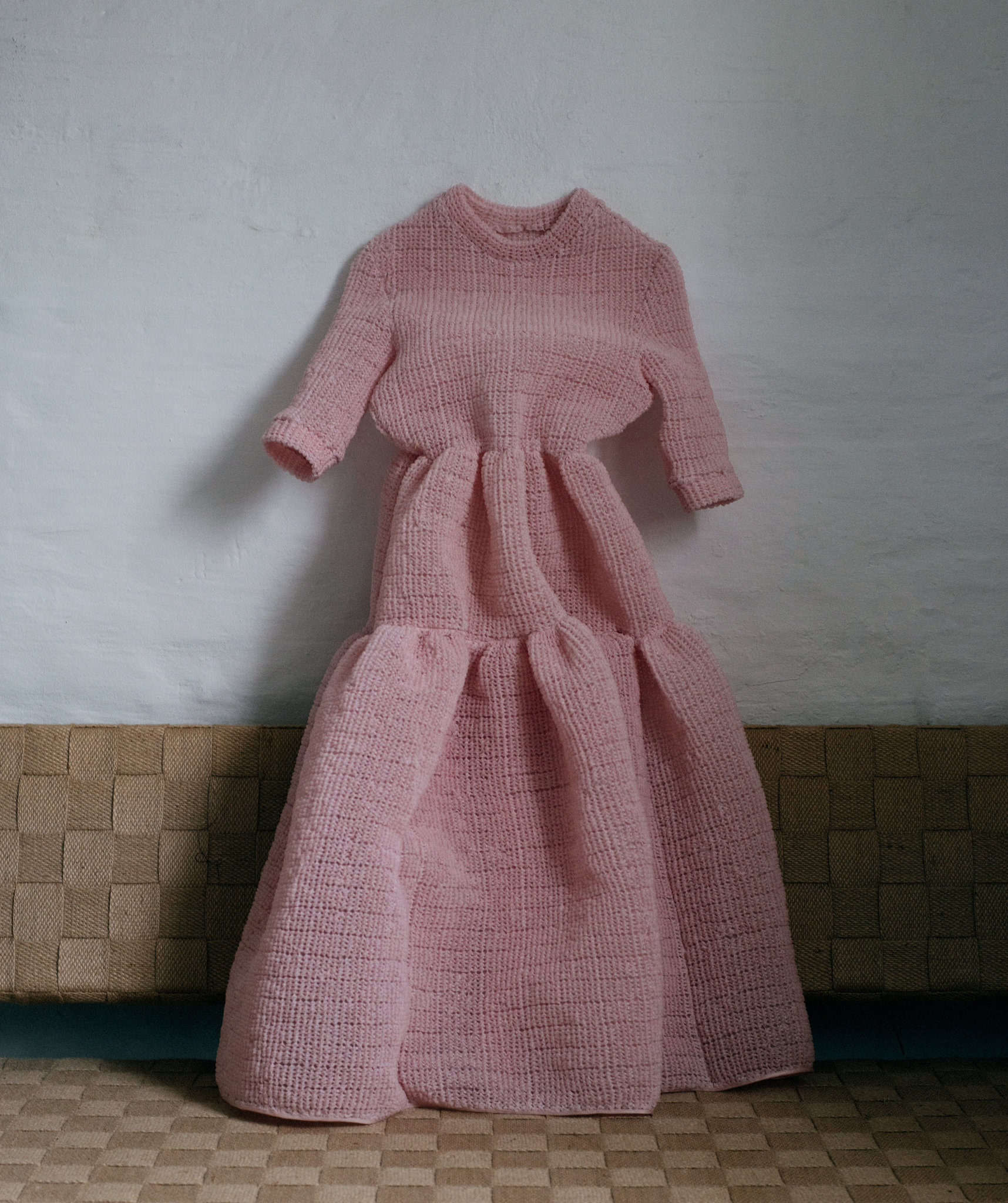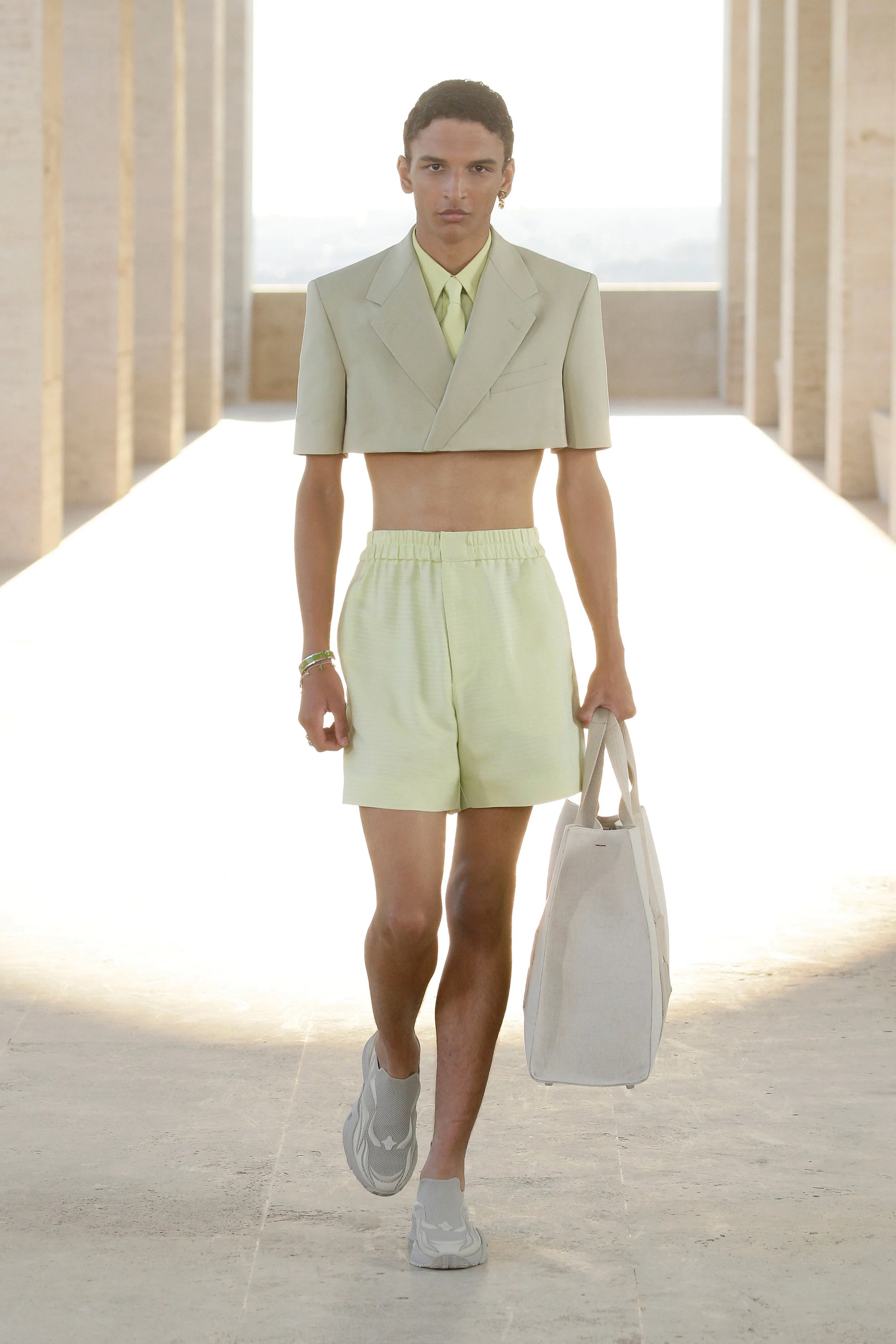Building an Outfit Like a Burlesque Routine with Kir Royale
Oh, hey.
Let’s free associate around the idea of Hygge:
Sweaters, sitting around the fireplace, danishes (the pastries, not the people), the Danish (the people, not the pastries), blankets, candlelight, hot tea, an evening with a good book.
Now, the same exercise but with Burlesque:
Tassles, glitter, empowerment, pasties (not pastries), wit, the art of the tease, stage lights, roaring applause.
On the page, these two topics are opposites - stark opposites, water-and-oil opposites, ketchup-and-nutella opposites.
I love opposites. This isn’t a revelation, I know. (I’ve professed this love before, when I spent three days in High-Low outfits.) My love of opposites extends past fashion, too. I love that moment when you go to a play, and in a moment of anger, an actor chooses to whisper. I love when you go to a fancy restaurant and they’re blaring rap music, or conversely, when you go to a hole-in-the-wall and they’re playing an obscure opera. Opposites are surprising, and I love a good surprise, too.
So, in honor of opposites, I created a Hygge outfit inspired by the creative process of a Burlesque performer, the incomparable Kir Royale. (And when you come down to it, what’s more Hygge than putting on more layers in the same way that someone else takes them off?)
Let’s start with Kir’s creative process:
from the boudoir of kir royale
1. Concept - What story am I telling?
When I'm first coming up with an act, I try to find something in life that inspires me: literature, art, a quote. For my latest piece that I am developing, the thing that sparked my inspiration was a quote from Margaret Atwood: 'At first, I was not a witch. Now, I am one." from her poem, Half-Hanged Mary. It's based on Mary Webster, a woman back in the Puritan days who was hanged twice by her neighbors on suspicion on being a witch. She survived both hangings, but afterwards was changed.
2. Meaning - What am I trying to convey to the audience?
As an artist, I want to find way to break away from societal constraints. This has become specially important to be as I have started to dip my toes into burlesque. It's a wild, freeing form of self-expression that make me feel wholly in control of my own body (which is something I can't say I have ever felt while working as an actor). My idea for this act was using rope as a symbol of suppression for anyone who is trying to police anyone, whether it be for their beliefs, their body, their sexuality or gender identity, etc. I wanted to physically break free of this in my act, so I will be tying a 3 large bungee cords around me, and then untying them.
3. View - What can I do to show this idea through costuming?
At this point, it's a good time to start taking about costuming, if you don't already have something to wear. Luckily, my sister made me a beautiful purple, teal, and turquoise bra and panty set, along with fringe straps for my arms and legs, that I plan to wear for this act. If I am looking for inspiration for costuming, I usually look at nature, mostly tropical flowers, fish, and birds. Nature has a way of placing so many beautiful colors together that you wouldn't expect to fit. My first costume was orange, yellow, lavender, and royal purple: it seems like way too much, but together, it was really interesting to look at onstage.
4. Music - How do I want to show this story?
Next, I find music. This was relatively easy this time around - I chose One Eye by Kate Nash. It's a song about revenge, set to a very bouncy, 1960's track. I then mapped the music, making sure that I found the correct counts. At this time, I also try to find interesting parts of the music. For example, there is a really lovely trill throughout the song that I assume is probably overlooked most of the time due to lyrics, and I decided to use that trill to indicate movement.
5. Movement - How do I want this to look like onstage?
After music, I sit in my apartment and dance around the house. Usually, by the time I come to choreography, I have created a skeleton of what I want to happen. I know that 1.)Verse One: I want to start on stage and pose 2.)Chorus One: I take off first rope 3.) Verse Two: I reveal two more ropes tied around my body 4.) Verse Two: I take off remaining rope 5.) Bridge: Floor work/appreciate the freedom of no ropes 6.) Remove bra and tassel twirl. Writing it down seems pretty simple, but it can take a while to get to this point. There are so many questions to ask: are you telling a story? Is this a slow burn? What do you want to invoke in your audience when performing this piece. Ultimately, I want the audience to experience relief as I remove the rope, so my choreography will reflect that idea.
6. Practice - How easy do I want to make this performance for myself?
After it is completed, it's practice, practice, practice. I need to be able to perform the act backwards and forwards, or in my sleep. This doesn't always happen, but I try to be as prepared as possible. I am not the type of performer who believes that butterflies in your stomach makes the performance better: I'd rather be completely at ease. This leads to a better performance, in my case.
7. Downtime Activities - How can I continue to create when I'm not actively working on a new act?
When I'm not actively creating, I am always on the lookout for inspiration. If I hear a song that I love, I write it down. If I see a picture that moves me, I save it. If I read a passage that speaks to me, I record it. Natural life is a huge inspiration. I try to take risks, and push myself to do something I haven't done onstage. I try to make a statement, even if it's a small one.
I took my time finding inspiration. I let my ideas ruminate, and ruminate, and ruminate, but they never congealed into anything good.
Then, I saw this photo:
I loved the metaphor of it: something that was inherently feminine, pink and tiered, standing up on its own.
I related to this dress. Often, I feel like my appearance is wielded against me. I’m called cute and adorable, darling and precious, and I’m none of those things. Like that dress, I may look childlike, but I’m an adult. Like that dress, I can stand on my own. Like that dress, I’m made of opposites.
The photo came from a piece from the New York Times Fashion Magazine highlighting designer, Cecilie Bahnsen. Like Hygge, Cecilie Bahnsen is Danish! (I didn’t plan this!) In her recent runway show, she paired girlish shapes with workwear-style pockets and black, utilitarian footwear. (OPPOSITES!) Her models walked in a synchronized clump, like an ominous battalion of cute terror. Bahnsen called her collection an, “intermeshing of the unhinged and the controlled.”
With that quote, I found my meaning. I’d create an outfit that mixed unhinged and controlled, girlish and gritty.
I moved on to Step 3, and scrolled through Danish nature photography. (Kir often looks to the tropics, but I wanted to keep my color inspiration Hygge.) I found this shot of the white cliffs of Mons Klint:
That flat, second-day hair life.
White is often considered dainty or innocent. In this photo, white was formidable and dangerous. My color palette was decided: black (the darkness of the water) and white (the color of the cliffs). (More opposites!)
Time to build!
I danced around to music as I pulled out all the white pieces in my closet. None of them felt right. Then, a revelation! I found my vacation clothes, stashed away for the season, and unfurled a sheer, white, eyelet beach dress. It was perfect. It had the girl-ghost-in-a-nightgown vibe that I needed.
Then, came the black. Under the dress, I layered black tights, a black slip, and a black turtleneck. On top, I added a faux-leather jacket and a chunky scarf, both foils for the dress. Emulating Cecilie Bahnsen’s models, I kept my footwear heavy with black, flat Chelsea boots.
Then, we went out. I wore this outfit to dinner and a play with my husband, and loved every second of it. The layers kept it Hygge, but the opposites made me feel that, like Kir Royale, I was making a statement.
I wasn’t sure this experiment would work. I was afraid that my outfit would end up being one or the other, Hygge or Burlesque-inspired, but not both. My anxieties were unfounded. Of course, combining opposites would create an outfit that I loved. Of course, that outfit would feel like me - girlish on the outside, but gritty in the middle. Of course.
I owe many thanks to Kir Royale, for sharing her creative process, and in turn, inspiring an outfit that I love! Her bio and upcoming performances are below. I wouldn’t miss them!
Before we go - this is the second post for a new category - How They Build It! Every month, I’ll be taking a different artist’s creative process and building an outfit around it. Are you an artist or creator? Want to share your process and collaborate with me? Send me an email at costumeparade@gmail.com!
I’ll return on Sunday with another post. I’m celebrating love, but with a rule-breaking twist!
Kir Royale is a local burlesque performer in Seattle. After years of performing on stage in theater, she discovered the art of burlesque and hasn’t looked back. Trained in acting, dancing, and singing, Kir weaves together performances that both tell a story and make a statement, in addition to showing off a few rhinestones and some tassel twirls. When she isn’t performing, she can usually be found drinking champagne, reading a book about cults, or enjoying a good board game. Follow her on Instagram @miss.kir.royale.
Upcoming performances in Seattle:
A Royale Romp, February 9th at the Copious Love Space
Strip Sexy and Don’t Get Murdered, February 17 at the Rendesvouz Jewelbox Theatre























